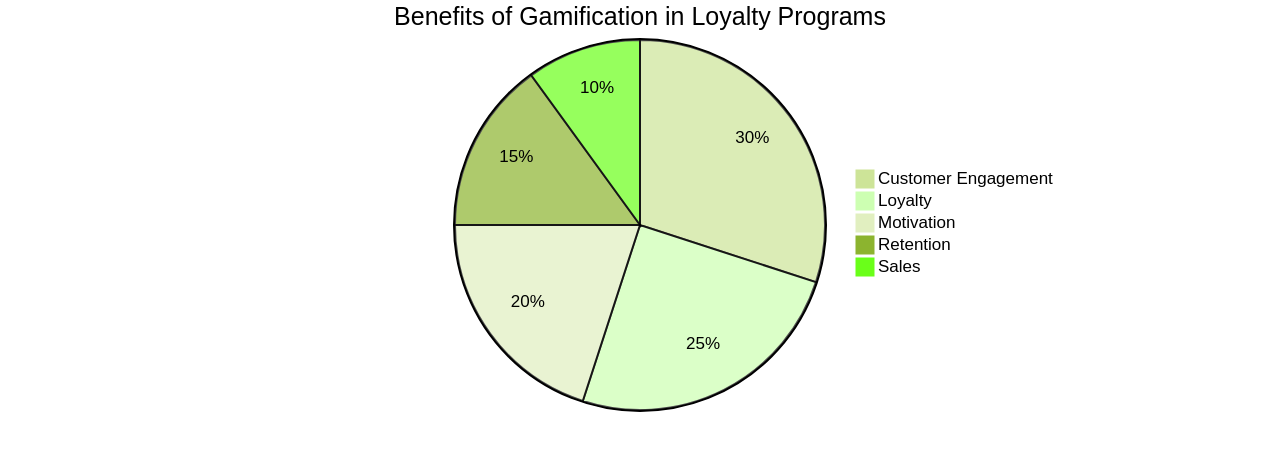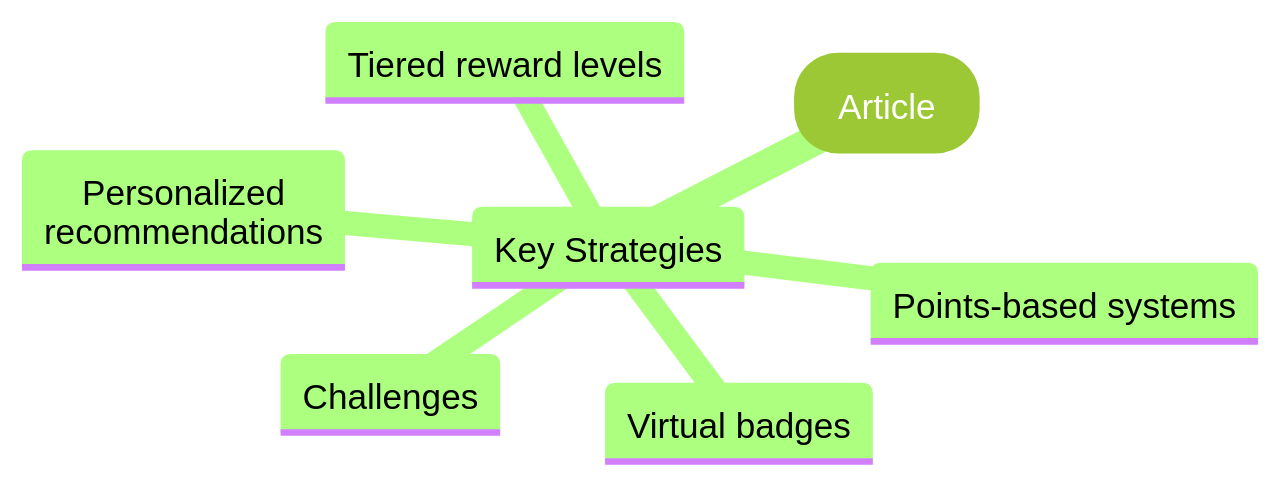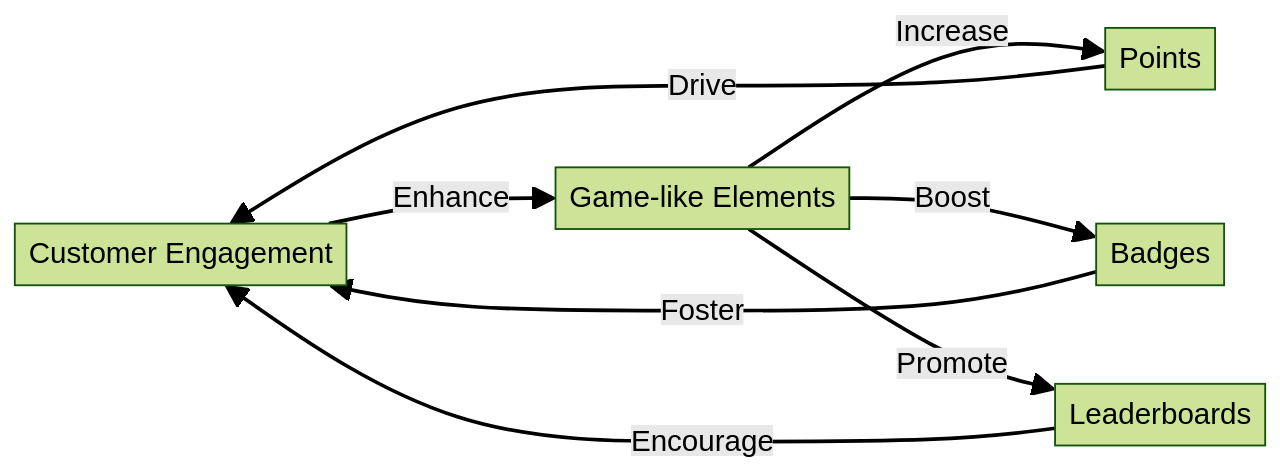Introduction
Gamification has emerged as a powerful strategy for enhancing customer engagement and loyalty in e-commerce. By incorporating game-like elements such as points, badges, leaderboards, and rewards into loyalty programs, businesses can create an exciting and rewarding experience for customers. This approach not only encourages repeat purchases but also fosters a sense of achievement and competition among customers, ultimately driving increased participation and loyalty. In this article, we will explore the role of gamification in e-commerce loyalty programs, its benefits, and best practices for effective implementation. We will also discuss real-world case studies and key strategies used in gamification to enhance customer engagement and drive loyalty.
The infusion of gamification into loyalty programs offers numerous benefits for businesses. It adds an element of fun and competition, increasing customer engagement and motivation. Gamified features encourage customers to actively participate, earn rewards, and progress through different levels of the program. This sense of achievement and progression further boosts customer loyalty and satisfaction, leading to improved customer retention and increased sales. However, effective implementation requires careful consideration of best practices, such as aligning gamification design with program goals, personalizing the experience for each customer, providing clear rules and transparency, and continuously analyzing and optimizing the program. By leveraging gamification in e-commerce loyalty programs, businesses can drive customer engagement, foster loyalty, and ultimately achieve long-term success.
1. Understanding the Role of Gamification in E-commerce Loyalty Programs
Understanding the importance of customer engagement and loyalty, businesses are turning towards innovative solutions such as gamification to enhance their e-commerce loyalty programs. The infusion of game-like elements and rewards into these programs not only encourages customers to interact recurrently with the brand but also fosters repeat purchases.
Gamification, when implemented correctly, has the potential to transform a mundane customer journey into an exciting and rewarding experience. This is achieved through the introduction of elements like points, badges, leaderboards, and rewards. These features create a sense of achievement and competition among customers, thereby driving increased participation and loyalty.
The benefits of incorporating gamification into loyalty programs are manifold.

It adds an element of fun and competition, thereby increasing customer engagement and motivation. Gamified features encourage customers to actively participate, earn rewards, and progress through different levels of the program. This sense of achievement and progression further boosts customer loyalty and satisfaction, leading to improved customer retention and increased sales.
However, the effective implementation of gamification in e-commerce loyalty programs requires careful consideration of several best practices. It is crucial to align the design of the gamification elements with the goals and values of the loyalty program. Personalizing the gamification experience for each customer is another key practice. This can be achieved by harnessing data analytics to understand customer preferences and tailoring the rewards and challenges accordingly.
Providing clear and transparent rules for participating in the gamified loyalty program is also essential. This builds trust and encourages active participation. Moreover, integrating social elements into the gamification strategy, such as allowing customers to compete or collaborate with their peers, share their achievements on social media, or provide feedback to the brand, can further enhance customer engagement.
It is also crucial to continuously analyze and optimize the gamification strategy. By monitoring customer engagement, behavior, and feedback, businesses can identify areas for improvement, make necessary adjustments, and enhance the effectiveness of the loyalty program.
Gamification platforms and tools designed specifically for e-commerce loyalty programs can be a great asset in this regard. They offer features such as point systems, badges, leaderboards, and rewards to encourage customer participation and repeat purchases. Some popular examples include Badgeville, Bunchball, Gamify, and Funifier.
Innovative approaches to gamification, such as personalized challenges, social competitions, and virtual currencies, are also gaining traction. By staying abreast of these trends and innovations, businesses can ensure that their e-commerce loyalty programs continue to engage customers, foster loyalty, and drive sales.
2. Case Study: Successful Implementation of Gamification in a Loyalty Program
An e-commerce giant, grappling with the challenge of elevating customer engagement and retention, opted to infuse its loyalty program with gamification. They launched a point-based system that rewarded customers for a range of actions, such as making purchases, penning reviews, or referring a friend. These points could then be exchanged for discounts or exclusive rewards. To add another layer of engagement, they introduced badges for accomplishing specific milestones and a leaderboard to instigate friendly competition among customers.
Gamification and loyalty programs are potent marketing tools that can amplify customer engagement and bolster customer loyalty. They incentivize and reward customer behaviors that resonate with business objectives, such as making repeat purchases, referring friends, or interacting with the brand on social media. This strategy has found success across numerous industries, including retail, hospitality, and e-commerce, helping businesses to elevate customer retention, amplify customer satisfaction, and ultimately drive revenue growth.
To measure the impact and effectiveness of gamification and loyalty programs, businesses can turn to case studies. These real-world examples provide valuable insights into the specific gamification techniques and features that work well, the challenges encountered during implementation, and the overall impact on customer engagement and loyalty. Case studies offer valuable, data-driven insights that can guide businesses in designing and implementing effective gamification strategies in their loyalty programs.
Integrating gamification into the customer experience, through elements like rewards, challenges, and leaderboards, can incentivize customers to remain loyal and actively engage with a brand's products or services. Gamification imbues the customer experience with a sense of achievement and enjoyment, making it more immersive and compelling. This can lead to improved customer satisfaction, higher levels of retention, and bolstered brand loyalty. Furthermore, gamification can motivate customers to share their experiences with others, resulting in increased word-of-mouth marketing and customer advocacy.
When looking to infuse loyalty programs with gamification, businesses can tap into the expertise of software developers, designers, and engineers. These professionals can craft innovative solutions that are tailored to a business's specific needs. To ensure the successful launch of a minimum viable product (MVP) and test its market fit, businesses can avail of various packages and consulting services. This allows for the testing of hypotheses, bug fixes, and market alignment, ensuring the successful launch of a minimum viable product (MVP) and testing its market fit.
A point-based system is a prevalent method used in loyalty programs to reward customer loyalty. Customers earn points for their purchases or other actions and can later redeem these points for rewards such as discounts, free products, or exclusive perks. This system incentivizes customers to continue engaging with the brand and encourages repeat purchases. By offering a point-based system, loyalty programs can cultivate strong customer relationships and drive customer loyalty.
To incentivize customer actions, businesses can consider using gamification. This strategy involves incorporating game elements and mechanics into non-game environments, such as websites or applications, to engage and motivate users. By adding elements like leaderboards, badges, rewards, and challenges, businesses can encourage customers to take desired actions, such as making purchases, completing tasks, or sharing content. This approach can enhance user engagement, foster loyalty, and drive desired behaviors.
Successful gamification loyalty programs span various industries and sectors. They are designed to engage and incentivize customers to stay loyal to a brand or company. These programs often incorporate game mechanics, rewards, and challenges to motivate customers to take certain actions or make repeat purchases. By creating a sense of fun and competition, gamification loyalty programs can increase customer loyalty and drive business growth.
Implementing gamification in loyalty programs can be a fruitful strategy to engage customers and increase their participation. By incorporating game elements such as points, badges, leaderboards, and rewards, businesses can create a more interactive and enjoyable experience for their customers. This can help to incentivize customer loyalty and drive desired behaviors.
Measuring the impact of gamification on customer engagement can be a complex task. It requires collecting and analyzing a variety of data points, such as user behavior, interaction patterns, and feedback. To ensure accurate measurement, it is essential to consult with experts who have experience in gamification and customer engagement strategies.
3. Key Strategies Used in the Gamification of the Loyalty Program
Integrating gamification into e-commerce loyalty programs can serve as a potent strategy for engaging and retaining customers.

This approach can be implemented by incorporating game elements that motivate customers to perform specific actions. These actions could include making purchases, referring friends, or completing designated tasks, and in return, customers receive rewards or incentives. Gamification tactics that have proven effective in e-commerce loyalty programs encompass points-based systems, tiered reward levels, challenges, virtual badges, and personalized recommendations drawn from customer behavior. These tactics can create an exciting environment, foster a sense of competition among customers, and ultimately, drive increased customer loyalty and repeat purchases.
To ensure the effectiveness of a gamified loyalty program, the rules of the game must be simple and clear. This involves defining the actions or behaviors that will earn customers points or rewards, establishing a transparent points system, and incorporating levels or tiers to provide extra motivation. Regular communication of the program rules and updates to participants is essential, as is providing a user-friendly interface where customers can easily track their progress.
An attractive and valuable rewards system is another crucial aspect of a successful gamified loyalty program. This can be achieved by offering a variety of rewards that cater to the diverse interests of program members, creating a tiered rewards structure, and personalizing rewards based on individual preferences and purchase history. Regular communication about upcoming rewards and promotions can generate excitement among program members, making the rewards more desirable.
The use of leaderboards can also play a significant role in maintaining customer interest and engagement. Regularly updating the leaderboard in real-time or at frequent intervals, having a transparent scoring system, and providing regular feedback to participants about their progress can enhance engagement and encourage continued participation. It's also advisable to periodically review and refine the leaderboard criteria based on participant feedback and program goals.
Celebrating top performers in a gamified loyalty program can serve as a form of positive reinforcement, reinforcing desired behaviors and actions within the program. This recognition can motivate participants to actively engage and strive for better performance, fostering a supportive and encouraging environment.
Data analysis is a powerful tool for refining and improving a gamified loyalty program. By collecting and analyzing data on user behavior, preferences, and engagement, insights can be gained to optimize the program. Adjustments can be made based on these insights to enhance the program, increase user satisfaction, and ultimately drive greater loyalty and engagement.
Maintaining customer interest and engagement in a gamified loyalty program requires regular updates and refreshes of the game elements of the program. Personalized experiences and rewards based on customer preferences and behaviors can enhance their engagement with the program. Creating a sense of competition and community among participants can also help to maintain interest. Regular communication with customers can remind them of the program and encourage continued participation.
In designing a gamified loyalty program in e-commerce, it's important to align the goals of the loyalty program with the overall business strategy. Careful consideration of the mechanics of the program, effective communication and transparency, personalization, and ongoing monitoring and analysis of the program's performance are all best practices to consider. By following these guidelines, businesses can design a gamified loyalty program that effectively drives customer engagement, repeat purchases, and ultimately, long-term loyalty.
4. Results and Impact: How Gamification Enhanced Customer Engagement and Loyalty
The incorporation of game-like elements into loyalty programs, a strategy known as gamification, has proven to significantly bolster customer engagement and retention.

The introduction of elements such as points, badges, and leaderboards not only enhances the interactive nature of the program, making it more enjoyable for the customers, but also fosters a competitive environment. This competitive spirit, coupled with the prospect of earning rewards, motivates customers to actively participate in the program and make repeat purchases, thereby driving customer loyalty and potentially increasing the business's revenue.
The integration of leaderboards and badges serves another crucial purpose: fostering a sense of community and achievement among customers. As customers vie for higher rankings and strive to earn badges for specific accomplishments, they interact more with the brand and other customers, thereby strengthening their emotional connection to the brand. This sense of community is further solidified by the shared sense of achievement when milestones are reached or challenges are completed.
Furthermore, the data collected through these gamified activities offers a wealth of insights into customer behavior. Businesses can use this data to personalize the loyalty program experience and tailor offers and promotions to individual customers. By understanding customer preferences and behaviors, businesses can better cater to their needs, thereby enhancing customer satisfaction and loyalty.
Evidence of successful implementation of gamification in loyalty programs spans various industries. For instance, airline loyalty programs that offer tiered status levels and exclusive perks, and retail loyalty programs that provide personalized offers based on customer preferences have all seen increased customer engagement and loyalty. Similarly, mobile apps that offer interactive games and challenges for earning rewards have also reported heightened customer engagement.
In summary, the integration of gamification in loyalty programs offers multifaceted benefits. Not only does it increase customer engagement and loyalty, but it also allows businesses to gather valuable customer data, foster a sense of community and competition among customers, and ultimately, drive business growth.
5. Lessons Learned: Insights from Implementing Gamification in a Loyalty Program
The case study presented illustrates the power of gamification in loyalty programs, emphasizing the significance of an easy-to-understand game design. It's important that customers grasp the rules of the game and the paths to earning rewards to foster their participation. This case study also underscores the need for enticing rewards that motivate customers to engage with the program.
Incorporating game-like elements, such as points and rewards, badges and levels, challenges and contests, personalization, and social interaction, can enhance customer engagement and loyalty. For instance, awarding points for actions like purchases or social media engagement can incentivize continued participation. Similarly, introducing a badge or leveling system can give customers a sense of progression and accomplishment. Challenges or contests add an element of competition, while personalization and social interaction can make the program more enjoyable and engaging.
When designing such gamified loyalty programs, it's crucial to clearly define the program's objectives and goals, identify the behaviors you want to encourage, and decide on the rewards to offer. The program should be engaging and interactive, incorporating game elements and personalized experiences based on individual preferences. Regular monitoring and evaluation of the program's performance, along with feedback collection from participants, can provide insights for program enhancement.
A simple and clear game design can be achieved by focusing on user engagement and ease of use. Defining clear objectives, introducing game elements, keeping the design straightforward, providing visual cues, and personalizing the experience can help. Offering rewards that are relevant and desirable to users, along with continuous testing and feedback collection, can aid in creating an engaging program.
Motivating customer participation can be achieved by offering attractive rewards and incentives, creating a sense of competition, incorporating social elements, and providing clear communication about the program and its benefits.
Data also plays a crucial role in refining loyalty programs. Analyzing customer data can provide insights into customer behavior, preferences, and purchasing patterns, helping to personalize loyalty programs, offer targeted promotions, and provide relevant rewards. This can also help identify areas of improvement, such as which rewards are most popular, and adjust the program accordingly.
Finally, it's important to note that while this case study provides key insights, each company's needs and customer base are unique. Therefore, it's crucial to tailor the loyalty program to the specific requirements and preferences of your target audience. Implementing gamification in loyalty programs can drive increased engagement, participation, and customer loyalty, providing a more interactive and enjoyable experience for customers.
Conclusion
In conclusion, gamification has emerged as a powerful strategy for enhancing customer engagement and loyalty in e-commerce. By incorporating game-like elements such as points, badges, leaderboards, and rewards into loyalty programs, businesses can create an exciting and rewarding experience for customers. This approach not only encourages repeat purchases but also fosters a sense of achievement and competition among customers, ultimately driving increased participation and loyalty. The benefits of gamification in e-commerce loyalty programs are manifold, including increased customer engagement and motivation, improved customer retention and satisfaction, and ultimately driving long-term success for businesses. However, effective implementation requires careful consideration of best practices such as aligning gamification design with program goals, personalizing the experience for each customer, providing clear rules and transparency, continuously analyzing and optimizing the program. By leveraging gamification in e-commerce loyalty programs, businesses can drive customer engagement, foster loyalty, and ultimately achieve long-term success.
The infusion of gamification into loyalty programs offers numerous benefits for businesses. It adds an element of fun and competition, increasing customer engagement and motivation. Gamified features encourage customers to actively participate, earn rewards, and progress through different levels of the program. This sense of achievement and progression further boosts customer loyalty and satisfaction, leading to improved customer retention and increased sales. However, effective implementation requires careful consideration of best practices such as aligning gamification design with program goals, personalizing the experience for each customer providing clear rules and transparency continuously analyzing and optimizing the program. By leveraging gamification in e-commerce loyalty programs businesses can drive customer engagement foster loyalty and ultimately achieve long-term success.
To harness the power of gamification in e-commerce loyalty programs start now by incorporating game-like elements such as points badges leaderboards rewards into your existing or new loyalty program. Align the design with your program goals personalize the experience for each customer provide clear rules transparency analyze optimize regularly to ensure maximum effectiveness. Additionally consider using specialized gamification platforms or tools to streamline implementation process. By adopting these strategies you can enhance your e-commerce performance drive increased participation boost customer loyalty ultimately achieving long-term success.





